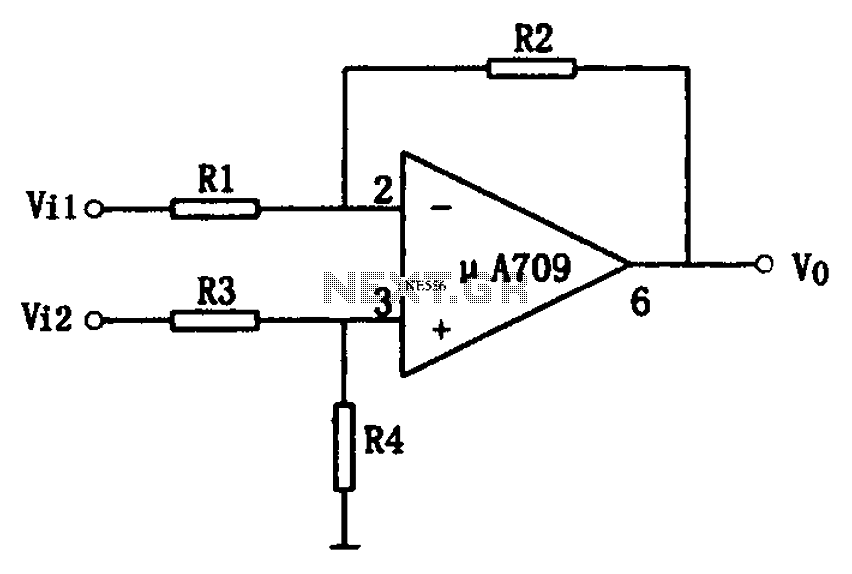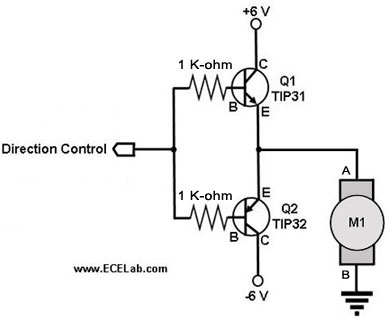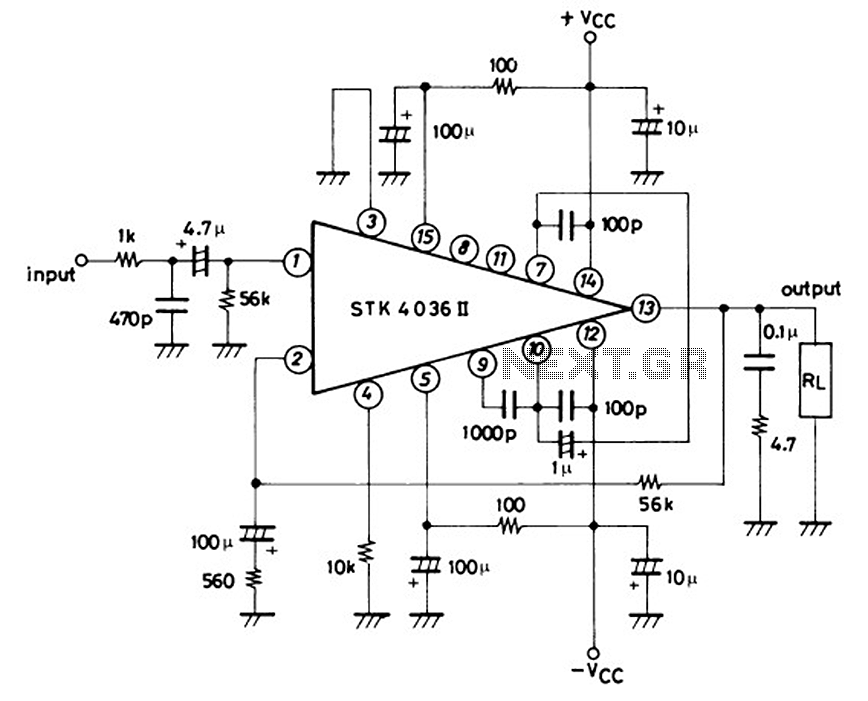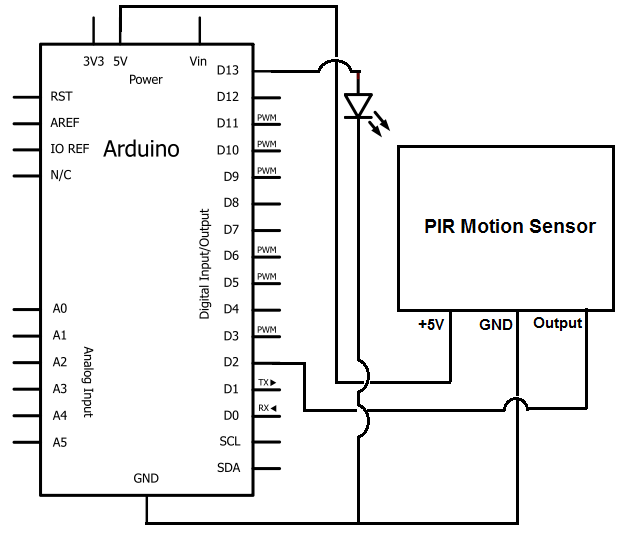
A709 a simple differential amplifier circuit diagram

The simple differential amplifier circuit consists of two input signals, Vi1 and Vi2, which are connected through resistors R1, R3, and R4, forming a voltage divider circuit at the op-amp input. Vi1 is applied to the inverting input of the op-amp, while Vi2 is applied to the non-inverting input. The output voltage Vo has a specific relationship with the input voltages Vi1 and Vi2.
The described differential amplifier utilizes an operational amplifier (op-amp) to amplify the difference between two input voltages, Vi1 and Vi2. The circuit configuration includes resistors R1, R3, and R4, which are critical for establishing the gain of the amplifier and determining the input impedance.
In this configuration, Vi1 is fed into the inverting terminal of the op-amp through resistor R1, while Vi2 is connected to the non-inverting terminal via resistors R3 and R4, which form a voltage divider. This arrangement allows for the adjustment of the gain and the balance between the two input signals.
The output voltage Vo can be expressed mathematically as Vo = (R2 / R1) * (Vi2 - Vi1), where R2 is the feedback resistor connected from the output to the inverting input. The gain of the differential amplifier is determined by the ratio of the feedback resistor and the input resistor.
Moreover, the design of this circuit ensures that common-mode signals (signals that are present on both inputs) are effectively rejected, making the differential amplifier particularly useful in applications where noise reduction is critical. The ability to amplify only the difference between the two input signals while rejecting common-mode noise is a key advantage of this configuration.
In practical implementations, careful selection of resistor values is essential to achieve the desired performance characteristics, including bandwidth and signal fidelity. This circuit finds applications in various fields, including audio processing, sensor signal conditioning, and instrumentation, where accurate and stable voltage differences need to be measured and amplified. As shown for the simple differential amplifier circuit. Two input signals Vi1 and Vi2 respectively by R1 and R3, R4 voltage divider circuit added to the op amp input. Vi1 appli ed to the inverting input of the op amp, Vi2 applied to the non-inverting input and the output voltage Vo and Vi1, Vi2 has the following relationship:
The described differential amplifier utilizes an operational amplifier (op-amp) to amplify the difference between two input voltages, Vi1 and Vi2. The circuit configuration includes resistors R1, R3, and R4, which are critical for establishing the gain of the amplifier and determining the input impedance.
In this configuration, Vi1 is fed into the inverting terminal of the op-amp through resistor R1, while Vi2 is connected to the non-inverting terminal via resistors R3 and R4, which form a voltage divider. This arrangement allows for the adjustment of the gain and the balance between the two input signals.
The output voltage Vo can be expressed mathematically as Vo = (R2 / R1) * (Vi2 - Vi1), where R2 is the feedback resistor connected from the output to the inverting input. The gain of the differential amplifier is determined by the ratio of the feedback resistor and the input resistor.
Moreover, the design of this circuit ensures that common-mode signals (signals that are present on both inputs) are effectively rejected, making the differential amplifier particularly useful in applications where noise reduction is critical. The ability to amplify only the difference between the two input signals while rejecting common-mode noise is a key advantage of this configuration.
In practical implementations, careful selection of resistor values is essential to achieve the desired performance characteristics, including bandwidth and signal fidelity. This circuit finds applications in various fields, including audio processing, sensor signal conditioning, and instrumentation, where accurate and stable voltage differences need to be measured and amplified. As shown for the simple differential amplifier circuit. Two input signals Vi1 and Vi2 respectively by R1 and R3, R4 voltage divider circuit added to the op amp input. Vi1 appli ed to the inverting input of the op amp, Vi2 applied to the non-inverting input and the output voltage Vo and Vi1, Vi2 has the following relationship:





